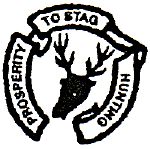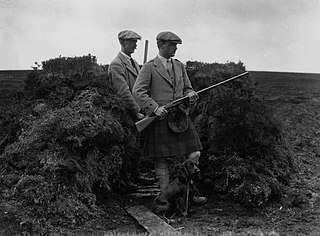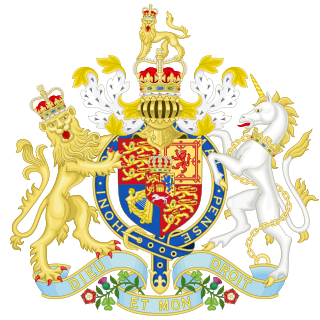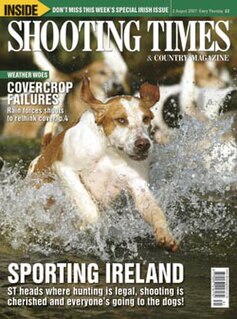 W
WIn the United Kingdom, the term hunting with no qualification generally refers to hunting with hounds, e.g. normally fox hunting, stag (deer) hunting, beagling, or minkhunting, whereas shooting is the shooting of game birds. What is called deer hunting elsewhere is deer stalking. According to the British Association for Shooting and Conservation (BASC) over a million people a year participate in shooting, including stalking, shooting, hunting, clay shooting and target shooting. To undertake shooting in the UK a valid firearms licence and insurance is required.
 W
WChase is a term used in the United Kingdom to define a type of land reserved for hunting use by its owner. Similarly, a Royal Chase is a type of Crown Estate by the same description, where the hunting rights are reserved for a member of the British Royal Family.
 W
WThe Deer Act 1980 was an Act of Parliament in the United Kingdom. It came into operation in November 1980, and has since been fully repealed by the Deer Act 1991.
 W
WThe red deer of Exmoor have been hunted since Norman times, when Exmoor was declared a Royal Forest. Collyns stated the earliest actual record of a pack of staghounds on Exmoor was 1598. In 1803, the "North Devon Staghounds" became a subscription pack. In 1824/5 30 couples of hounds, the last of the true staghounds, were sold to a baron in Germany. Today, the Devon and Somerset is one of three staghounds packs in the U.K., the others being the Quantock Staghounds and the Tiverton Staghounds. All packs hunt within Devon and Somerset. The Chairman in 2016 is Tom Yandle, High Sheriff of Somerset in 1999.
 W
WDriven grouse shooting is the hunting of the red grouse, a field sport of the United Kingdom. The grouse-shooting season extends from 12 August, often called the "Glorious Twelfth", to 10 December each year. Large numbers of grouse are driven to fly over people with shotguns. Driven grouse shooting first appeared around 1850 and became popular in the later Victorian era as a fashionable sport for the wealthy. The expanding rail network allowed relatively easy access into the remote upland areas of Britain for the first time and driven grouse shooting developed in tandem with this by providing shooting in a convenient and reliable form. Large numbers of birds are driven over a fixed position providing a regular supply of fast moving targets without the need to seek out the birds. The development of the breech-loading shotgun was also an essential ingredient in the development of the practice as it allowed more rapid reloading in the field matching the availability of target birds.
 W
WThe Game Act 1831 is an Act of Parliament in the United Kingdom which was passed to protect game birds by establishing a close season when they could not be legally taken. The act also established the need for game licences and the appointing of gamekeepers. The act still covers the protection of game birds to this day.
 W
WThe Game & Wildlife Conservation Trust is a British charitable organisation promoting game and wildlife management as a part of nature conservation, whilst working with the shooting and hunting community. For over 75 years the Trust has been conducting scientific research to understand why there have been declines in species such as the grey partridge, black grouse, water vole, corn bunting and brown hare.
 W
WA gamekeeper or, in case of those dealing with deer, (deer-)stalker is a person who manages an area of countryside to make sure there is enough game for shooting and stalking, or fish for angling, and acts as guide to those pursuing them.
 W
WThe Glorious Twelfth is the twelfth day of August, the start of the shooting season for red grouse, and to a lesser extent the ptarmigan in Great Britain and Northern Ireland. This is one of the busiest days in the shooting season, with large amounts of game being shot. The date itself is traditional; the current legislation enshrining it in England and Wales is the Game Act 1831. Not all game have the same start to their open seasons – most begin on 1 September, with 1 October for woodcock and pheasant. Since English law prohibits game bird shooting on a Sunday, the start date is postponed to 13 August on years when the 12th falls on a Sunday.
 W
WThe Ground Game Act 1880 is a law that was passed by the Parliament of the United Kingdom in 1880 by Gladstone's government, as a result of many complaints over many decades about the intolerable amount of damage that farmers' crops were suffering from damage by wild rabbits and hares and landowners not allowing farmland occupiers to kill them because of game preservation.
 W
WA hunt ball is an annual event hosted by a mounted fox hunting club, most of which are located in Britain and the United States. These balls are traditionally held around the holiday season, which is why many American Hunts mark the end of the hunting year. In the 19th century, hunt balls were not unlike other country dances. Although not as formal as the London Balls that characterized "The Season," they were still elegant by local standards.
 W
WIn the United Kingdom, Hunt Monitors endeavour to observe behaviours of organized hunts and undertake information gathering activities, known as hunt monitoring.
 W
WThe Hunting Act 2004 is an Act of the Parliament of the United Kingdom which bans the hunting of wild mammals with dogs in England and Wales; the Act does not cover the use of dogs in the process of flushing out an unidentified wild mammal, nor does it affect drag hunting, where hounds are trained to follow an artificial scent.
 W
WThe Night Poaching Act 1828 is an Act of the Parliament of the United Kingdom still in effect in the 21st century. It forbids night poaching, especially taking or destroying game on lands, etc., by night, or entering lands at night to take or destroy game. For the purposes of this Act the word “game” shall be deemed to include hares, pheasants, partridges, grouse, heath or moor game, black game, and bustards.
 W
WPheasant shooting is the sport of hunting the common pheasant. It is most popular in the United Kingdom, but is practised in other parts of the world. Shooting of game birds is carried out using a shotgun, most often 12 and 20 bore or a .410, often on land managed by a gamekeeper.
 W
WShooting Times and Country Magazine, more commonly known as the Shooting Times, is a British shooting and firearms magazine, published by TI Media. The magazine also features articles on hunting, fishing, deer stalking, gamekeeping, gundogs and wildlife.